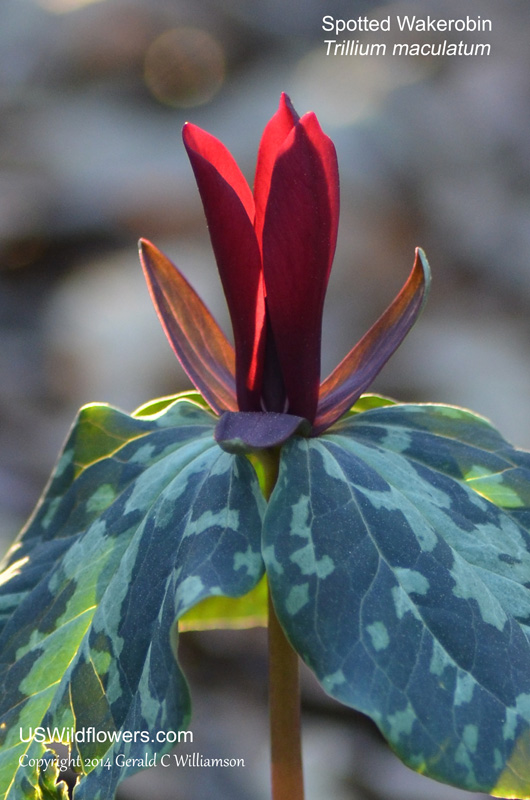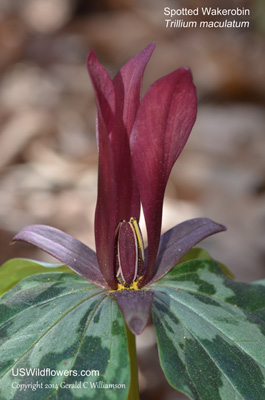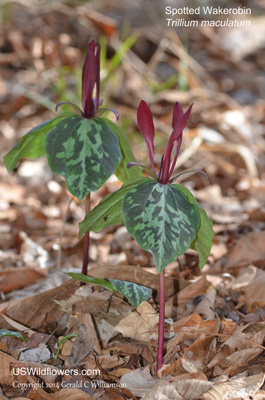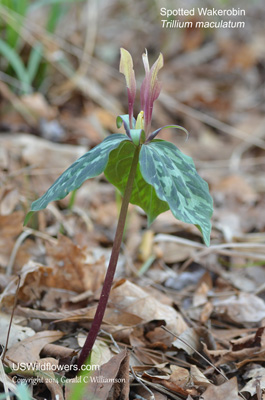Wildflowers of the United States | |||||||||||||
| |||||||||||||
Trillium maculatum - Spotted Wakerobin, Spotted Trillium. There are over 40 species in the Trillium genus worldwide; Flora of North America lists 38 species being found on this continent. Trillium was placed in the Liliaceae family for most of its lifetime of scientific classification. Most authorities have recently removed it from Liliaceae and placed it in Melanthiaceae because unlike other Liliaceae, the petals and sepals of Trillium are distinctly different - in most other Liliaceae species very similar. (Note that this tepal issue is at play in other Liliaceae species such as Calochortus, and it is almost universally accepted that Liliaceae will continue to be dismembered.) Even more recent phylogenetic analysis (Schilling, Floden, and Farmer, 2013) implies that there are sufficient differences from other Melanthiaceae to warrant inclusion in a separate family, and a number of respected authorities now place Trillium in Trilliaceae.
| Trillium maculatum is one of the sessile-flowered Trilliums (subgenus Phyllantherum.) It can be difficult to tell the difference between some of the species in that subgenus (I certainly find it so!) so it is most helpful to have someone with expertise do the identification for you. T. maculatum and T. cuneatum - closely related, along with T. luteum, based on recent phylogenetic analysis (referenced above) - look nearly identical to me. Fortunately, while their ranges overlap somewhat, T. cuneatum is a more northern species; the range of T. maculatum is in the southern half of the states in which it is found. I won on both counts here; these were located in Georgia near the Florida border, and the folks at Wolf Creek Trout Lily Preserve had identified them for me. Trillium maculatum - Spotted Wakerobin - is a plant of rich forests on the bluffs, floodplains, and banks of streams in the deep south. It is an early-flowering species, blooming as early as the first part of February. Found in: AL, FL, GA, SC Leave comments on Trillium maculatum at this link.   Map courtesy of The Biota of North America Program. Map color key Search Our Database: Enter any portion of the Scientific, Common Name, or both. Do a general Google search of the entire site: #ad
| #ad
| | ||||||||||
|
Commercial / Cookie Notice Looking for Wildflowers for a specific state? Check here: | |||||||||||||
|
All content except USDA Plants Database map Copyright Gerald C. Williamson 2025 | |||||||||||||
Code Update 20230302




